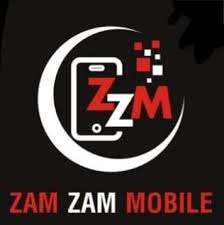Weblogs or blogs are sites that collect particular thoughts, ideas, or opinions over time. These are web applications that contain periodic posts on a common web page. These types of posts are often but not necessarily in reverse chronological order. Each blog tells a story, whether it is about a person, organization, event, or some other topic such as the environment, healthcare, disasters, language, literature, etc. The person who runs a blog is called a blogger and the act of creating and maintaining a blog is called blogging. In a blog, entries are read, commented on, and discussed by the larger community, often leading to active debate. This may sound similar to a listserv and, in some ways, it is. However, unlike listservs, blogs are typically accessible to the public at large, thereby encouraging a more diverse readership and allowing information to be disseminated at a greater speed. A blog is a type of website where entries, known as posts, are written in a casual or conversational style. These posts are often centered around hyperlinks, making it easy to share and distribute information instantly. By including links to other websites, blogs help users find related content and connect with a larger network of information. Blogs can cover any topic and are updated frequently, making them a dynamic source of information and discussion. A blog has been variously defined as follows:
♦ A blog is a type of website where new posts are added regularly. These posts appear in order with the newest posts at the top. Each post is displayed on the same main web page. This format allows readers to see updates as soon as they are published.
♦ For Peter Scott (2001), a blog is “a page containing brief, chronologically arranged items of information. A blog may take the form of a diary, journal, what’s new page, or links to other websites.
♦ Clyde (2004a) says that from the user or visitor’s point of view, a blog is a web site with content arranged as entries of text and hyperlinks, posted in reverse chronological order, with a timestamp for each entry so the reader knows when it was posted, and an archive of previously posted content that can be easily accessed by visitors.
♦ Weblogs are a dynamic and flexible tool that is easy to use. Whether you are creating content or simply viewing it, a weblog provides a straightforward experience. This simplicity makes it accessible to everyone, regardless of their technical skills (Richardson, 2004).
Although the term weblog was coined by John Barger in December 1997 and its short version blog by Peter Merholz in 1999, the website, http://info.cern.ch/, created by Tim Berners-Lee at CERN is said to have been the first blog. From this page Berners-Lee pointed to all new sites coming online. Winner states that the content of this site is archived at the World Wide Web Consortium (newhome.weblogs) (Clyde, 2004b; Clyde, 2005). It was from here that a community of bloggers emerged. NCSA’s “What’s New” page was the main blog on the Internet from 1993-96. As the World Wide Web grew rapidly, so did blogs. Winner created his first weblog, “The Scripting News”, in February 1996. “The Scripting News” was one of the earliest weblogs and is currently the longest running blog on the Internet in world wide. Other early blogs include Rebecca Pocket and Cam’s World, which documented new bloggers and still have significant influence in the blogosphere today.
These early weblogs were link-driven sites containing a mix of links, comments and personal thoughts and essays and could only be created by people who already knew how to create a website. Blood (2002) says, “Today, however, through the introduction of how-to manuals, blog IDs and a number of user-friendly web tools, even the least savvy people can create a weblog” (rebeccablood.net). A good and useful example of such a tool is the Rich Text Editor (RTE) offered by Printex, which claims ‘no HTML to learn’ and ‘no software to download and install’, but with RTE, how one’s entry appears on one’s screen is how it will be published on the web.
Today, blogs are emerging as a dominant way to publish and communicate on the web. There were only 26 blogs in the the year of 1996 but now there are millions of blogs (Blood, 2002). According to one estimate, there are currently more than 63 million blogs on the web. The total number of blogs in existence is doubling approximately every six months. About 1.3 million new blogs are posted each day, which works out to about 54,000 posts per hour. Most blogging sites are free, and they come with built-in templates that allow you to create blogs without having to deal with complex coding and formatting. Blogs have a strong immediacy – they can address topics virtually and immediately. Sometimes blogs even break news before more traditional media sources.
Writing a Blog/Library Blog
The various types of art of creating and maintaining a blog is called blogging. Whether writing your own blog or contributing to a collaborative effort, there are a few things to keep in mind. Schwartz (2005) mentions some reasons to consider writing or contributing to a collaborative effort in blogging such as:
Writing a blog keeps you current: You want to know what is going on in the world before you start talking about it. Posting regularly on a blog encourages you to be actively involved in the process of seeking information and current awareness.
Blogs are advocacy tools: If you want change, you have to talk about it. Blogs are a great forum, not only to make the world aware of the issues facing both libraries and librarians, but also to consider your own thoughts and develop means of expressing them effectively.
Blogs build community
Many of you may think that no one will read what you write. Schwartz (2005) thought the same when he started his blog, Open Stacks. He said, “When I started my blog, Open Stacks, I shared your skepticism.” Despite his doubts, he went ahead and wrote anyway, eventually finding that people read and appreciated his work. As it turns out, no matter who you are and what you write about, there will be others who share your interests. I was surprised to find that, as a librarian, you already have a built-in community of people interested in you and your perspective.’ Very progressive segment of the LIS community.
You are unique
One of the problems of librarianship is image. Stereotypes of librarians abound. Publishing a blog is an opportunity to showcase your personality and thus serve to dispel some of those pervasive myths. Even if you do not consider yourself unique and are afraid of being redundant, your voice is yours and yours alone, so join the chorus. Do it for yourself: never underestimate the power of writing as catharsis. In the end, it’s easy, so make no excuses and write a blog.
Library Weblogs
Blogs are perfect for disseminating information because the system of dated entries makes it easy for the audience to identify new material. Many libraries with the system have also caught the fever. The growth of library weblogs has increased significantly during the past several years. There were only 57 library weblogs in 2003, while in 2004 the number increased to 198 weblogs (Clyde, 2004b). The number reached 392 in the year 2006 (Karami & Oloumi, 2006). Doug Goans and Terry Vogel (2003) describe a weblog project in an academic library at Georgia State University to inform science faculty and students about library news, services, and resources. They developed a blog. Caver (2003) lists a number of public libraries that are using blogs to publicize news and events, while Harder and Reichard (2003) suggest that academic libraries could develop department or subject specific weblogs so that faculty and graduate students could access content customized to meet their information needs. Clyde (2004b) has also examined library weblogs in late 2003; his findings show that public and academic libraries were more likely to have weblogs than other types of libraries. The most common purpose or objective was to provide links to news, information, and Internet resources for library users. Few provided interactive facilities, and when provided, there was little evidence that the facilities were used to any great extent. Only one fifth of the weblogs are updated in the last day and only half in the last week. It is interesting to note that less than half provided an RSS feed.
Cohen believes that new bloggers can grow personally and, more importantly, professionally by continuing her work as a pioneer in the field of library blogs. By sharing their experiences and knowledge, they can learn and improve their skills and also contribute to the broader community. This process helps them build a stronger professional presence and can open up new opportunities for their careers. Bar-Ellen (2004) examines the value of blogs as an information dissemination tool by a list of blogs written in English, which was compiled from several list directories. The findings indicate that blogs have high professional potential and are a new information channel for transferring information to both fellow professionals and other users of the web. The main challenge at this time is to increase the readership of these blogs. Blair and Cranston explain the steps in building a library weblog and approach it after the arrival of a baby. They state, ‘Prospective parents do a lot of planning before the arrival of a child; prospective bloggers should do the same as starting a baby blog is a long-term commitment.’ A clear scope, a well-defined audience, a professional look, and regular maintenance do not happen overnight.
Armstrong et al., (2004) have demonstrated the potential of blogs to integrate the personal aspect of a journal or diary that documents the student’s journey through learning with the immediate publishing capability of the web thereby creating the potential for collaborative, public discussion of learners’ ideas. Efimova and Fiedler (2003) explore how professionally oriented weblog projects support the emergence of loosely coupled learning networks. Some think that some blog networks can be seen as “learning webs”. These learning webs seem to suit the needs of knowledge workers who want flexible and dynamic ways of learning. In these networks, people can share information, ideas and experiences, helping everyone to learn and grow. The environment is adaptable, allowing users to find and access the knowledge they need at any time, making it a valuable resource for continuous learning.
Using blogs in libraries
Blogs are natural for librarians. They are an extension of what we are already doing: identifying, organising and making information accessible in libraries. They give us the opportunity to be more responsive, reach out to faculty and students through our library blogs to highlight news, post student/faculty book reviews and invite comments, announce events, list new acquisitions, etc. Blogs are a simple and effective way for librarians to stay informed and disseminate timely information for libraries. Like other developments, the blog is also approaching library science to think about its use. The obvious use of weblogs in libraries is to set up to communicate news to patrons. This can be in the form of a link to the weblog on the main web page or as news displayed directly on the front page. In fact, many libraries have a weblog on the main library page. In most cases there is only one person with access to the site to update with news. With a weblog, more users can access the site and update it as needed. In all cases, there may be an administrator who has full control of who can post on the site.
Thus, libraries should follow new technologies very closely and the advantages of the latest innovations such as blogs and RSS feeds should be reflected in library services. Despite the growing popularity of blogs, few libraries have taken advantage of what they have to offer. Adding blogs to libraries is free and easy. Librarians can collect and make information accessible to patrons and researchers – and if they wish, invite them into the discussion. Blogs can be updated easily, frequently, and continuously, making them an attractive alternative to static newsletters.
Hanne (2001) describes the benefits of reading blogs written by librarians. She also identifies directories of blogs, including those limited specifically to library blogs. Certainly librarians have created many useful and well-known professional weblogs. Weaver (2003) suggests that a weblog could be used as a tool for communication with library users. In fact, she notes that ‘it is surprising that most libraries do not use them to keep customers informed because the format is preferred for that task.’ She is supported by Alcock (2003), who says that ‘this tool can be used to inform customers of changes, additions and news.’ In addition, it can enable library customers to comment on the library’s service. Schwartz (2005) also emphasized that libraries can use weblogs to provide the latest information on local events, provide library news, and announce new books and other materials in the library collection.
The primary advantage of the blog format is its ease of use and clear presentation of updated content. Many blogging tools are designed to simplify publishing, regardless of the user’s technical skill level. However, when it comes to libraries, there are two major issues (Brennan, 2007): First, should a library create a blog? Second, can blogs be used in the provision of reference services?
Libraries can use blogs for a variety of reasons. Blogs can enhance communication with patrons by providing timely updates about events, new collections, and services. They also provide librarians with a platform to share expert insights, book reviews, and research tips. Additionally, blogs can be an interactive space where patrons can ask questions and connect with library staff while fostering a sense of community. Overall, blogs serve as a versatile tool to improve library outreach and user engagement.
♦ Some provide the latest information on local events, fulfilling their role as a news and information source for their community. Others provide library news (both local and national), advocating the importance of library support.
♦ Some provide the latest information on local events, fulfilling their role as a news and information source for their community. Others provide library news (both local and national), advocating the importance of library support.
♦ Still others are using blogs to provide announcements of new library acquisitions, promote the services they work so hard to provide.
♦ And then there are those who are doing all of these things at once!
♦ Direct users to valuable, fresh, or engaging resources by providing links, descriptions, or recommendations. Focus on resources that are new, useful, or interesting to enhance their experience or knowledge.
♦ Comment on local and national events and activities in the IT, book and library world;
♦ Provide news from the library/information service; and
♦ Request feedback or comments and generally help the library connect with its users, especially those who rarely visit a physical library. As far as the advantages of blogs in libraries are concerned, they can be used in the following ways:
♦ In the current awareness service, blogs can be used to highlight news or resources of interest; and post book reviews from students, faculty and staff members;
♦ Listing new acquisitions and announcing library news and events. Another blog application is the use of systems such as RSS technology in libraries for selective dissemination of information.
♦ As a place to talk, but they are also a place to hear what our users are telling us. Librarians and information professionals, including those working in libraries and information centers, have begun to use blogs to share ideas with colleagues and to solicit feedback through the comment function. Blogs reflect personal perspectives, they allow readers to respond and comment. This ‘give and take’ refines blog content and creates a sense of community among participants.
Weblog is an excellent way to stay current. News goes into blogging pipelines long before it appears in print and, in many cases, online magazines and journals. Librarians are great filters of information and relying on a select group to provide your daily information can be a huge time saver. Blogs, in addition to their other uses, are good tools for promoting and distributing news items.
Managing Responsibilities and Guidelines
The responsibility for managing a blog may be divided among several contributors (such as librarians) who have authority to post and update entries. A library may have one blog that several librarians from several departments use to disseminate general library information, and the library may have a series of blogs run by smaller groups of librarians who want to deliver information to a more specific audience. For example, business librarians may manage to deliver information for business faculty and students. However, a library blog is managed by one or more librarians within the organization. It has some sort of presence on (or at least is linked to) the library Web site, and the librarians use it to deliver news and information relevant to patrons in that library rather than to a larger community of librarians and information professionals.
Commenting on the relevance of blogs to librarians and information professionals, the ASIST professional guidelines state that information professionals should strive to “increase public awareness and appreciation of information availability”. Thus, librarians and information professionals should not only provide information on demand and act as intermediaries between users and information, but should also alert users to the existence of innovative “relevant” information, and provide access and facilitate users and fellow professionals to efficiently use resources, technologies, and information retrieval tools. An additional responsibility of the information professional is to “maintain each user’s, provider’s, or employer’s right to privacy and confidentiality and to respect whatever proprietary rights they may have”.
Search tools
Many Internet search engines and directories, such as Yahoo and Google, provide information about blogs and lists of weblogs, and some include pages from weblogs in their search results. In addition, weblog creation sites such as Blogger maintain lists of weblogs that have been created using their services. According to Ramos and Piper (2006), several search engines are designed specifically for finding blogs. Among the largest ones are Google’s blog search engine and Technorati. Google’s blog search engine can be found at http://blogsearch.google.com, while Technorati is available at http://www.technorati.com. These search engines help users find blog posts on the Web. The same criteria you use to evaluate a website for accuracy, currency, and authority should also apply to blogs. It is anticipated that the primary use of blogs in context will be for the most cutting-edge material, things that have not yet appeared in regular literature channels.
Conclusion
Technology is advancing rapidly and having a major impact on the field of library and information science. As technology develops, the way libraries and information systems work is also changing. Researchers Dhiman (2007a, b, and 2008) and Dhiman and Rani (2007) have explored how these changes are affecting the field. Blogging is also becoming an increasingly cornerstone tool in the dissemination and consumption of information online, so it makes sense to briefly explain a concept that expands the concept even further. It’s called syndication and its basis is quite simple. Some people, over the course of a day, read a lot of regularly updated web content: blogs, news sites, etc. Visiting each site individually is time consuming and, since updates are unpredictable, not always fruitful. Librarians are becoming early adopters of blogging for various internal purposes such as informing their clients and themselves about new web and information technology resources, changes in library services and collection development, and delivering information and team-based projects. Accelerating.
Blogging works best in situations where information needs to be arranged in descending chronological order. Blogging can be an efficient and effective option for information and knowledge transfer, resulting in a more productive workforce. But we can say that blogging is still an uncharted territory, although the potential of the web has realized its importance in the current era of information technology. The very useful elements of blogging such as semi-prominence, public-private overlap, interactive nature, timeliness, swarming of bloggers in discussions rather than a single source broadcast to the public, all hold promise as a medium of information sharing and dissemination as radio and television. etc. did in their time (Dhiman, 1998). And because of the increasing complexity of the application of fair use, copyright, privacy and intellectual property principles in the electronic world, the information professional must constantly be aware of developments in these areas.
Blogs or weblogs are ideal for disseminating information, commenting, expressing opinions and discussing implications of all kinds of information as chosen by the blogger. This has allowed millions of people worldwide to exercise their right to legitimate free expression. Additionally, blogs are also being used to provide local information; such as changes in opening hours, special lectures and new acquisitions (Barlan, 2004). Here, selecting the right technology or developing more suitable technologies can create a distinct advantage in the highly competitive top levels of the blogging world.
Read Also:
- Blogging For Beginners
- How To Set Up Your First Blog
- Blogging With Tumblr
- How To Create A Business Blog
- Making Money Through Your Blog








Leave a Reply